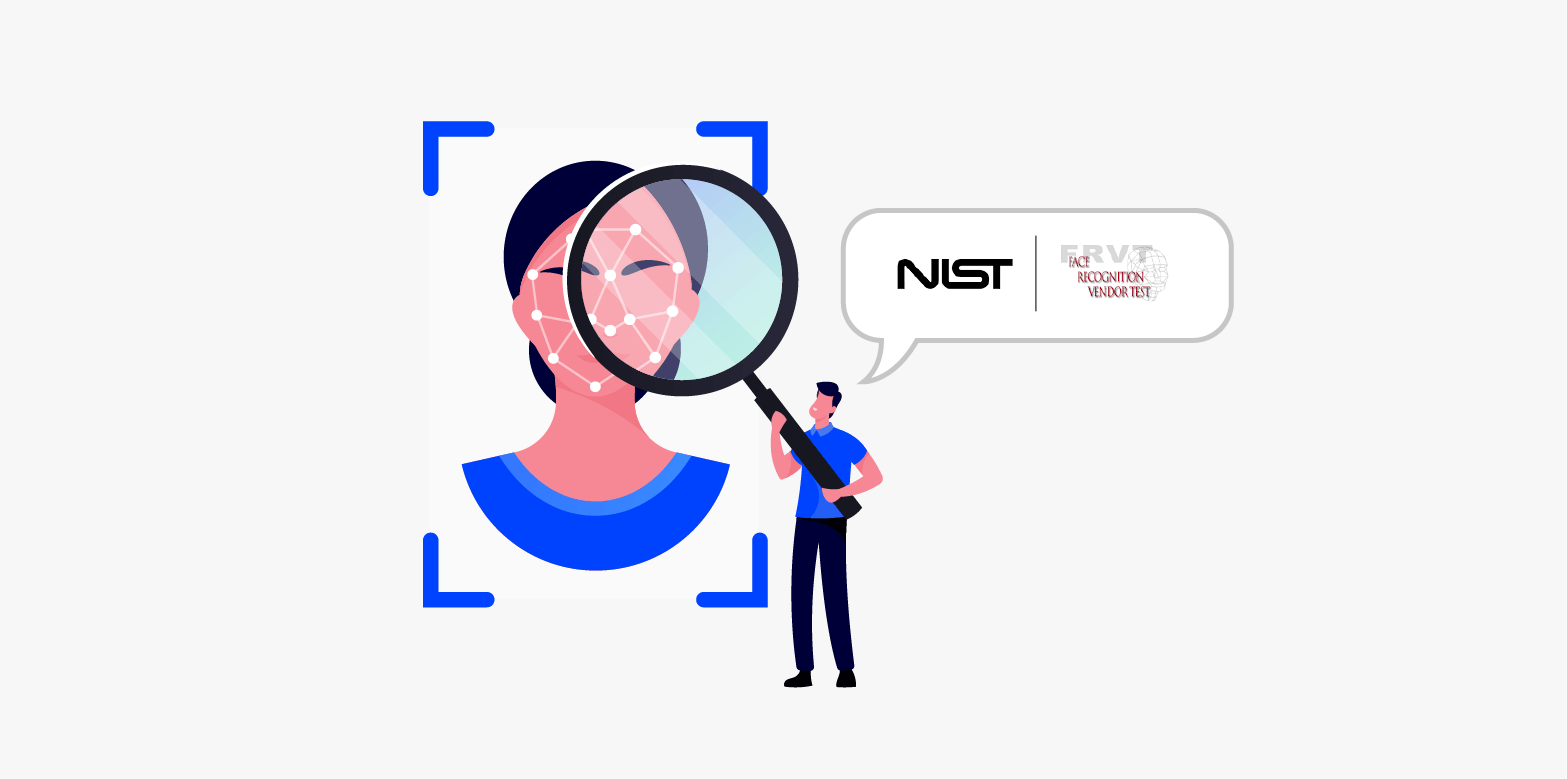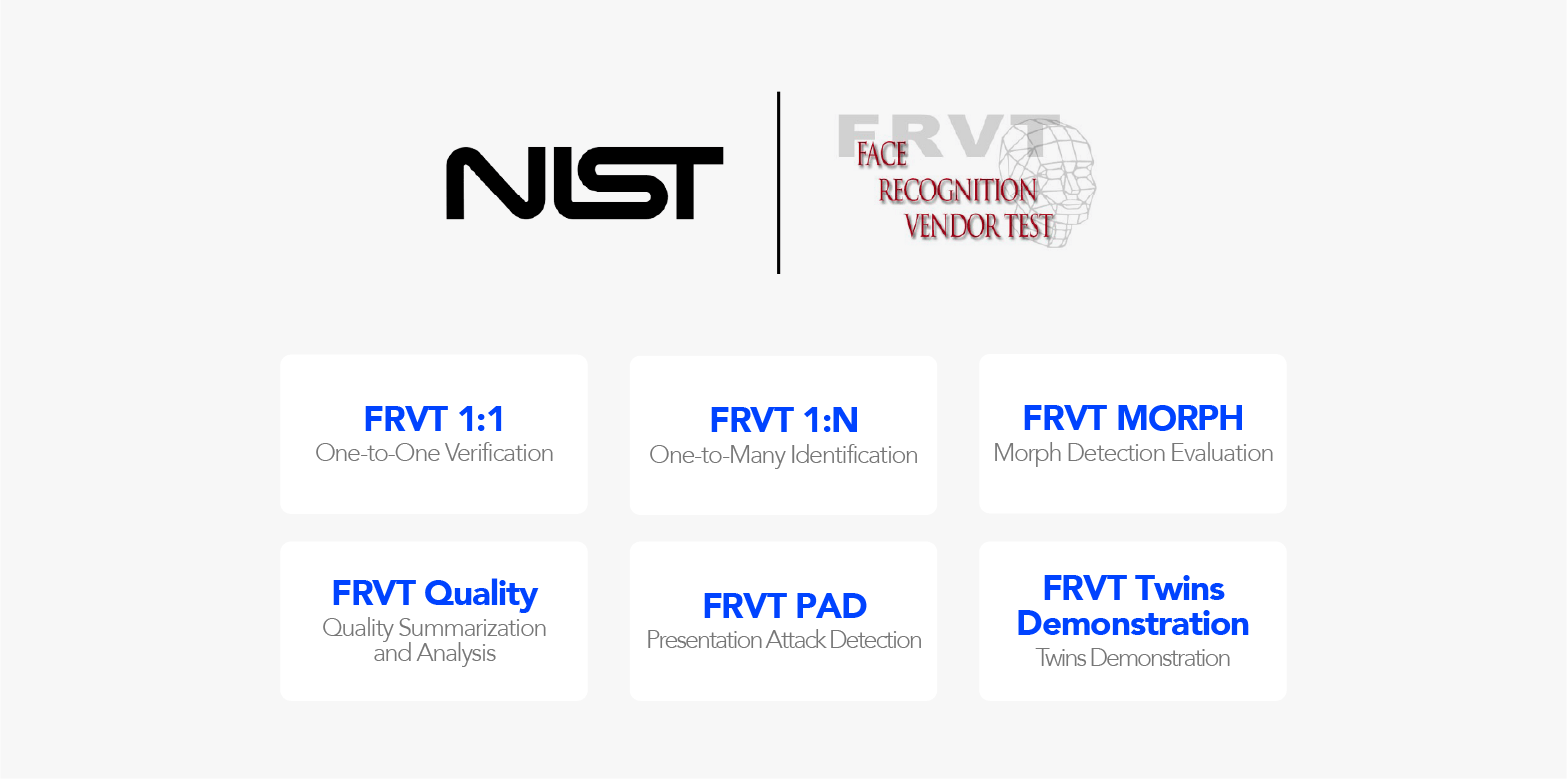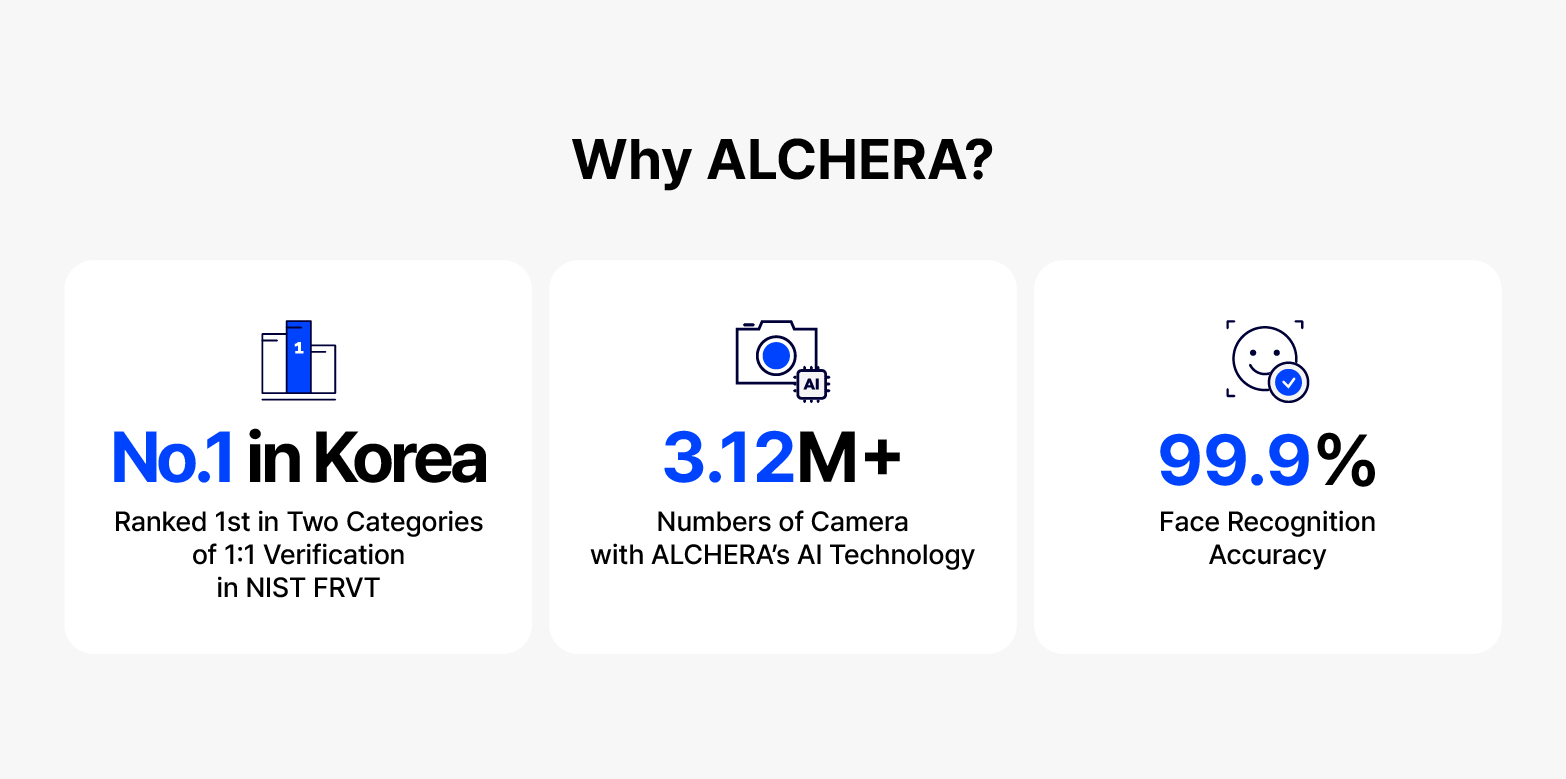Understanding the Importance of NIST FRVT in Face Recognition Technology – Part 1
ALCHERA
June 15, 2023
June 15, 2023
NIST FRVT - The Standard for Face Recognition Technologies
Table of Contents
What is NIST FRVT?
• How has FRVT changed?
• 6 Types of FRVT testing
Why NIST FRVT Is Important?
ALCHERA Proves its Face Recognition Technologies in NIST FRVT

In recent years, face recognition technology has emerged as a powerful tool with numerous applications, ranging from security and surveillance to personalized experiences in our daily lives. With its ability to identify and authenticate individuals based on their unique facial features, this technology has garnered significant attention and adoption. However, concerns regarding accuracy, bias, and privacy have also come to the forefront. To address these concerns and ensure the advancement of reliable face recognition systems, organizations like the National Institute of Standards and Technology (NIST) play a crucial role.
What is NIST FRVT?
“NIST FRVT” stands for the National Institute of Standards and Technology (NIST) Face Recognition Vendor Test (FRVT). It is an ongoing evaluation program conducted by NIST to assess the performance and capabilities of face recognition algorithms and systems developed by different vendors. The primary objective of NIST FRVT is to provide an independent and standardized assessment of face recognition technologies, fostering advancements and ensuring the reliability and accuracy of these systems.
NIST FRVT evaluates various aspects of face recognition technology, including accuracy, speed, and the ability to handle different scenarios and datasets. The evaluation process involves benchmarking algorithms against standardized datasets to measure their performance in areas such as face detection, face matching, and face identification. The datasets used in NIST FRVT encompass a wide range of demographic characteristics, poses, lighting conditions, and other challenging factors to ensure the robustness and generalizability of the evaluated systems.
The results of NIST FRVT are widely recognized as a benchmark for the face recognition industry. They provide valuable insights into the strengths and weaknesses of different face recognition algorithms and help drive advancements in the field. The evaluation fosters healthy competition among vendors, encouraging the development of more accurate and efficient face recognition technologies.
How has FRVT changed?

The history of FRVT spans several years of iterative development and has played a crucial role in advancing the field of face recognition. The origins of FRVT can be traced back to the early 2000s, when NIST began conducting performance evaluations for face recognition algorithms. Initially, the evaluation primarily focused on still images and limited datasets. However, FRVT gradually expanded to include more diverse datasets and evaluated face recognition performance on a larger scale. Various verification testing methods have been developed since the first introduction of NIST FRVT.
In 2013, NIST introduced the FRVT as a significant advancement in the evaluation of face recognition technologies. The first iteration of FRVT focused on evaluating one-to-one verification, which involved verifying whether two face images belong to the same individual.
FRVT started evaluating face recognition algorithms on large-scale datasets with millions of images in 2014. These evaluations focused on one-to-many identification scenarios, where the goal was to match a specific face against a large database of known individuals. This initial test provided valuable insights into the performance and limitations of various algorithms.
During the COVID-19 pandemic, the prevalent use of face masks posed a significant challenge. To overcome this issue, FRVT emphasized the evaluation of face recognition performance in scenarios where faces are partially obscured, such as wearing masks. Evaluations aimed at addressing the impact of face masks on face recognition accuracy and developing robust algorithms.
As we can see, over the years, FRVT has evolved and expanded to encompass different aspects of face recognition technology. It has incorporated more challenging datasets, including those with diverse demographics, poses, and lighting conditions, to ensure the evaluation reflects real-world scenarios. FRVT remains an essential tool for assessing the performance and reliability of face recognition systems.
6 Types of FRVT testing

Six types of FRVT testing ensure a comprehensive evaluation of face recognition algorithms and systems, covering a wide range of scenarios and challenges.
- 1:1 Verification: In this testing, the focus is on determining whether two face images belong to the same individual or not. The algorithms are evaluated based on their ability to accurately verify the identity of individuals by comparing pairs of face images.
- 1:N Identification: This type of testing evaluates the performance of face recognition algorithms in matching a specific face against a large database of known individuals. The goal is to determine the accuracy and efficiency of the algorithms in identifying an individual from a pool of potential matches.
- Morph Detection Evaluation: “Morphing” refers to the technique of digitally combining two or more faces to create a single image that resembles both individuals. The algorithms are assessed based on their ability to accurately distinguish between genuine and morphed images, as well as their performance in differentiating between morphed images and images of the original individuals.
- Quality Summarization and Analysis: The purpose of this test is to assess the quality and suitability of face images used in face recognition systems. The evaluation of Quality Assessment Algorithms (QAAs) involves testing capability to assign low-quality scores to border crossing images with non-ideal pose, illumination, and resolution.
- Presentation Attack Detection (PAD): Presentation attacks refer to attempts to deceive face recognition systems by using fake or manipulated biometric samples, such as printed photos, masks, or digital media. The FRVT PAD Test focuses on assessing the ability of algorithms to differentiate between genuine face presentations and these fraudulent attempts.
- Twins Demonstration: Identical twins present a unique challenge for face recognition technology due to their highly similar facial features and genetic resemblance. The FRVT Twins Demonstration focuses on evaluating algorithms' ability to correctly identify and differentiate between these individuals, who share a high degree of visual similarity.
Why NIST FRVT Is Important?
The NIST FRVT holds significant importance due to its establishment of standardized evaluation protocols. With numerous face recognition algorithms being developed, NIST's framework allows for fair comparisons by defining evaluation methodologies, datasets, and performance metrics. This standardization aids in identifying top-performing algorithms and guiding researchers towards developing more accurate systems.
By subjecting them to rigorous testing on diverse datasets, the test evaluates their ability to correctly match faces across variations in pose, illumination, expression, and occlusion. This process helps enhance the accuracy of algorithms, making them more reliable in applications like law enforcement, border control, and access control systems.
Addressing bias and diversity is another important aspect of NIST FRVT. The test analyzes algorithm performance across different demographic groups to identify accuracy disparities and potential sources of bias. By highlighting the need for fairness and inclusivity in face recognition systems, NIST contributes to the development of unbiased technology, advancing the mitigation of bias and improving algorithm robustness.
NIST FRVT promotes transparency and accountability by providing detailed reports on algorithm performance, which are publicly available. This transparency enables stakeholders to make informed decisions and fosters public trust in the responsible and ethical use of face recognition technology.
Furthermore, NIST FRVT drives innovation and advancement in face recognition technology. The insights gained from FRVT contribute to the collective knowledge in the field and guide policymakers in formulating regulations and standards, ensuring responsible and ethical use of face recognition systems.
ALCHERA Proves its Face Recognition Technologies in NIST FRVT

ALCHERA is a leading provider of face recognition technologies that have demonstrated exceptional performance in various applications, including the evaluations of the NIST FRVT. ALCHERA has been continuously participating in the NIST FRVT since 2019, and consistently demonstrated a high level of performance especially in the area of 1:1 verification. ALCHERA's systems have consistently met the rigorous evaluation criteria, demonstrating their effectiveness and reliability in real-world scenarios.
More details about FRVT and ALCHERA's FRVT Challenge will be introduced in part 2.
...
...